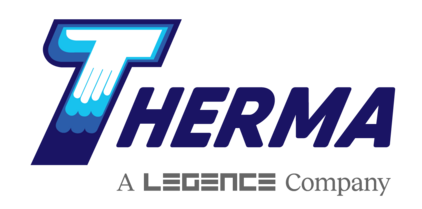HVAC systems create comfortable and healthy environmental conditions inside buildings by maintaining temperature and humidity within specific ranges and ensuring an adequate supply of fresh air. Air volume variation can play a significant role in maintaining thermal comfort and ensuring healthy indoor conditions that also meet regulatory requirements. This guide navigates the considerations for Constant Air Volume (CAV) or Variable Air Volume (VAV) systems and how they can meet your energy requirements.
CAV Systems
Constant air volume systems provide ventilation at a constant volume flow rate to all zones and regulate building conditions by supplying air in an on/off fashion or at different temperatures by varying the heating or cooling rate. The control of these systems depends on temperature. For example, when a zone temperature exceeds the specified limits, a blast of cool air is supplied at a constant rate until the temperature meets the settings and the HVAC system switches off.
Benefits of CAV Systems
CAV systems are relatively simple in construction and typically have a lower initial cost. These systems are best suited to applications where the HVAC requirements of the building are straightforward: single zones or multiple zones with very similar climate requirements.
Drawbacks of CAV Systems
While simpler, CAV systems have some cons associated with them. With fixed airflow, these systems don’t allow for zone-level airflow. This can impact thermal comfort in settings that have varied programmatic needs, such as open office layouts. Overall, CAV systems provide less humidity control and are typically less energy efficient.
VAV Systems
Variable air volume systems supply ventilation air at a constant temperature with a variable volume flow rate. They allow relatively fine control of the building climate by constantly adjusting the flow of conditioned air to maintain the specified temperature range.
The nature of the flow rate control differs from system to system but typically includes control of the supply fan(s) speed and the use of thermostat-controlled flow dampers in each zone. VAV systems are more complicated than CAV systems and can cost more upfront but are typically more energy efficient due to their lower overall fan power consumption and can therefore cost less over time.
Benefits of VAV Systems
VAV systems provide better control over temperature, airflow, and humidity. They also provide multi-zone conditioning that can be utilized in varied layouts. The ability to control airflow allows individual settings that can increase the overall thermal comfort of occupants.
Drawbacks of VAV Systems
While VAV systems allow finer conditioning control, they require more system components including VAV boxes, controls, and dampers. The additional system design requirements, equipment, and devices, as well as more complex commissioning and maintenance.
Constant or Variable Air Volume?
VAV systems are far better at servicing multi-zone buildings with variable HVAC requirements such as a multi-story, multi-purpose commercial building. They also provide much finer climate control than CAV systems which generate a less consistent temperature profile due to their on/off operation. CAV systems can be an effective low-cost alternative for single-zone buildings with simple HVAC requirements such as a large storage warehouse or factory.
VAV system wear is generally less due to the more gentle fluctuations in fan speed versus the regular on/off switching in CAV systems. However, the greater complexity of VAV systems means that maintenance may be more complicated and have increased costs. The choice of constant or variable air volume for your HVAC system depends on a number of factors that will affect life cycle cost and performance. Each type of system provides benefits and has considerations that determine suitable applications.
System Selection for Your Facility
Whether you are designing a ground-up facility, or renovating an existing one, the best course of action is to enlist an HVAC professional early in the process. Working with an expert can help you identify HVAC system requirements and balance them with your energy efficiency goals as well as budget restrictions. The professionals at Therma can help you select the right system for your facility and work with your team throughout the construction process to ensure proper design, sizing, and installation. Contact Therma today to get started.







